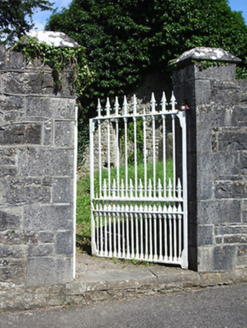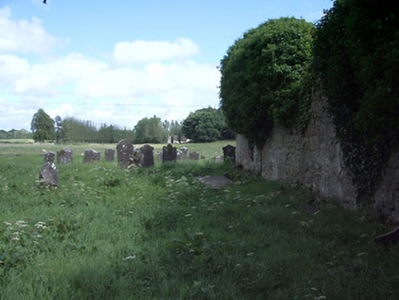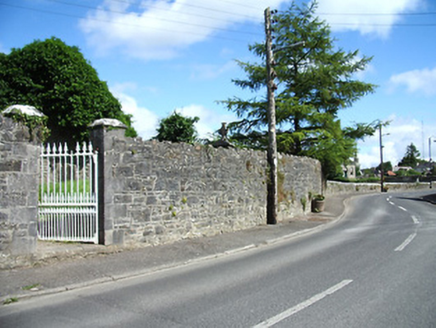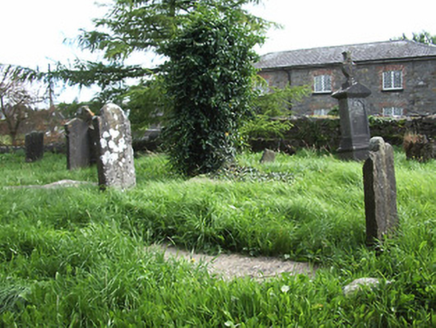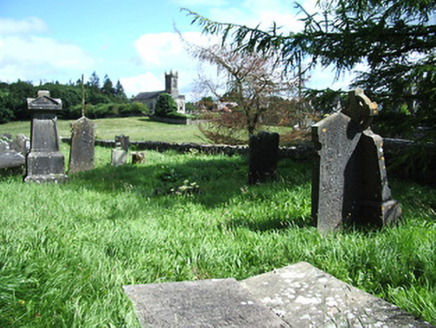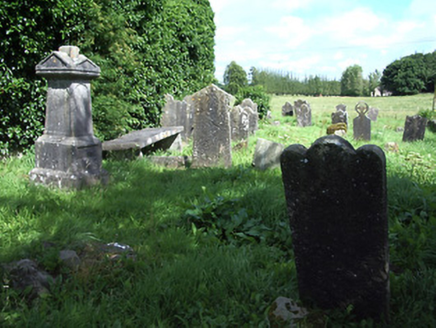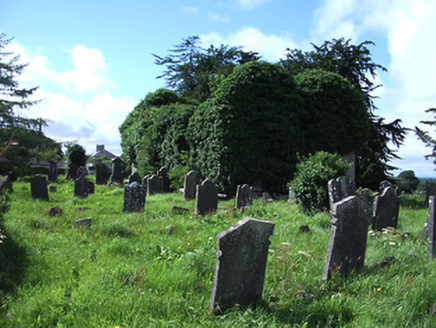Survey Data
Reg No
13312037
Rating
Regional
Categories of Special Interest
Archaeological, Artistic, Historical, Social
Original Use
Church/chapel
In Use As
Graveyard/cemetery
Date
1730 - 1770
Coordinates
220216, 268753
Date Recorded
22/07/2005
Date Updated
--/--/--
Description
Graveyard on irregular D-shaped plan, established c. 1733 and possibly earlier, set within the grounds of a ruinous medieval church (LF019-050---). Now overgrown and disused. Contains collection of carved stone grave markers, both recumbent and upstanding, from the eighteenth and nineteenth century. Fetherston family monuments (or Ardagh House 13312039) to site. Number of monumental graves with decorative features such as urns, pediments and crosses. Iron railings to a number of graves. Surrounded by random rubble stone walls, some with iron railings over. Pair of dressed limestone gate piers (on square-plan) to entrance (west) having capstones and a wrought-iron gate. Located to the north of Ardagh.
Appraisal
This long established churchyard contains an interesting collection of mainly eighteenth and nineteenth-century recumbent and upstanding grave markers, some of high artistic merit. A number of the grave markers having interesting classical detailing, such as urns and pediments, and some retain high quality iron railings. The earliest legible grave marker is dated 1733 (Revd. Patrick Farrell, Dean of Ardagh). Some members of the Fetherston family are also buried here. Direct access from Ardagh House to this site is apparent from the Ordnance Survey first edition six-inch maps (1838). One grave reputedly holds the remains of Paddy ‘Big Pat’ Farrell, a leader of the insurgents at the Battle of Granard during the 1798 Rebellion (Sept.), where he was killed. The ruined church (LF019-05001-) is probably late-seventeenth or early-eighteenth century in date but it was probably used for service until the construction of the present church (13312032), c. 1810. A number of cut and moulded stones, some of which are sculpted with Romanesque carvings (LF019-05003-), lie within the churchyard, possibly indicated that this was the site of a c. twelfth century foundation.
